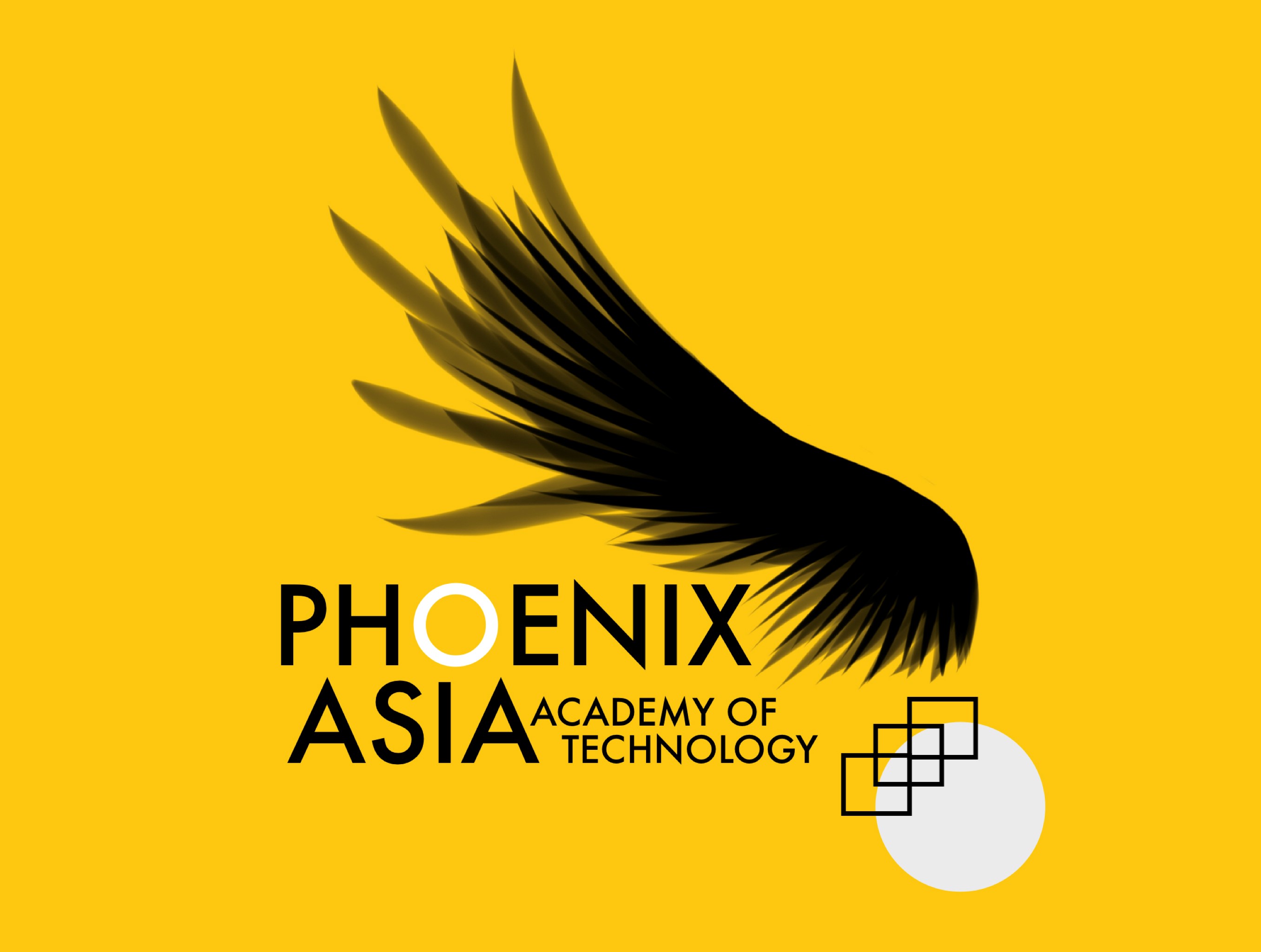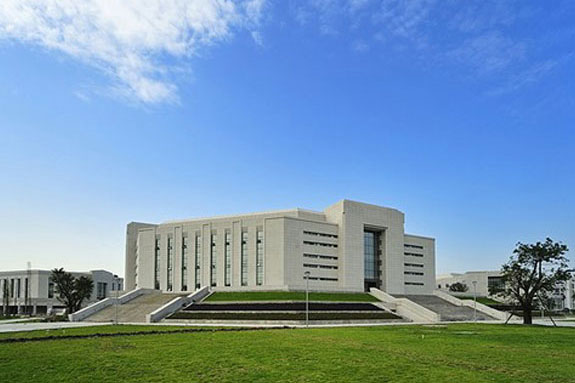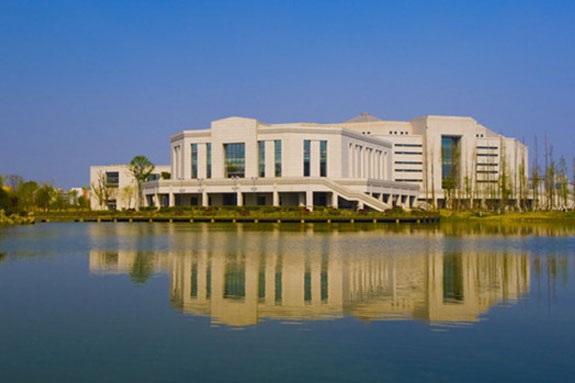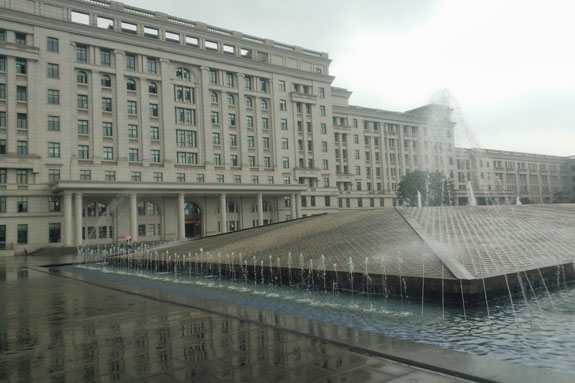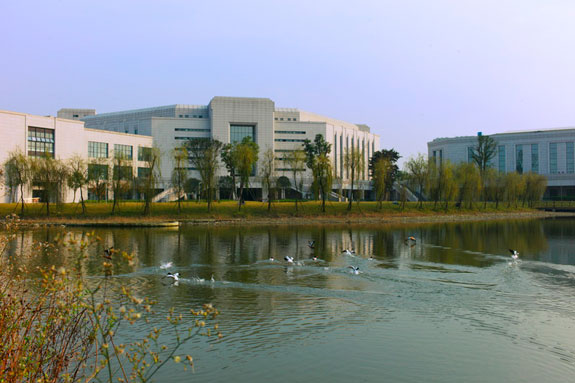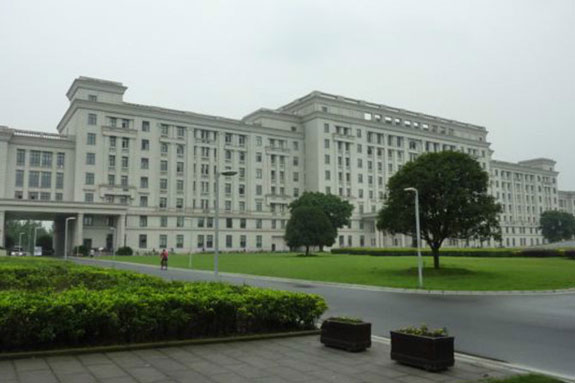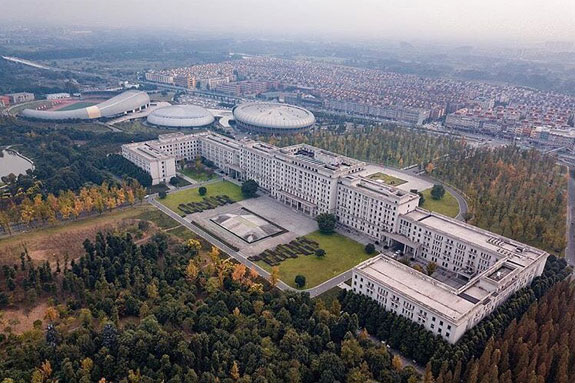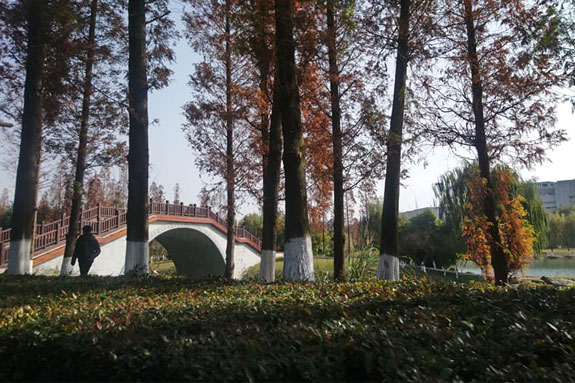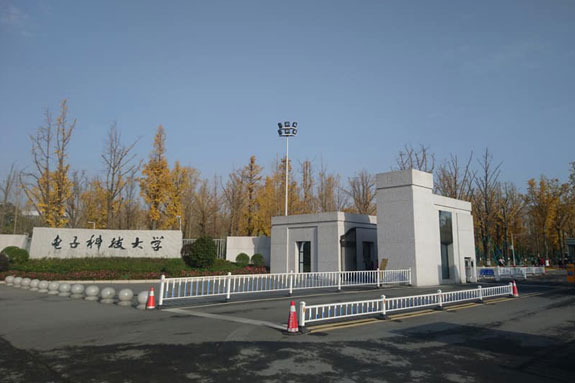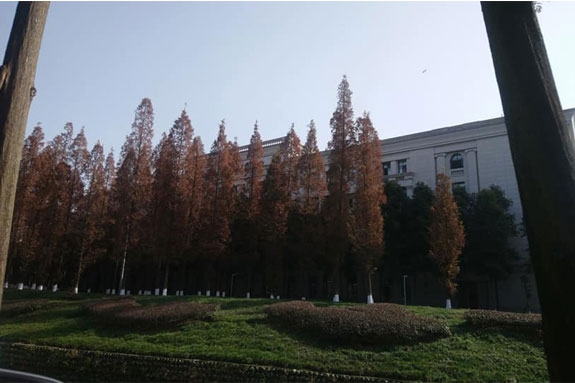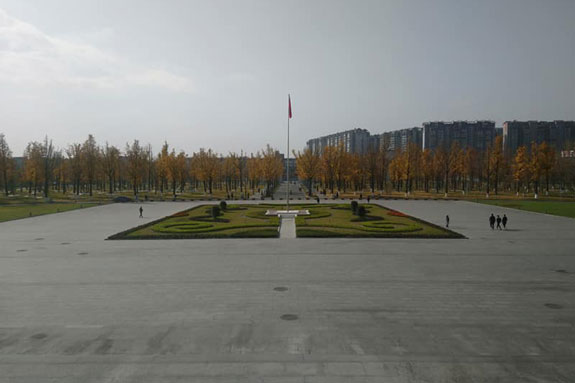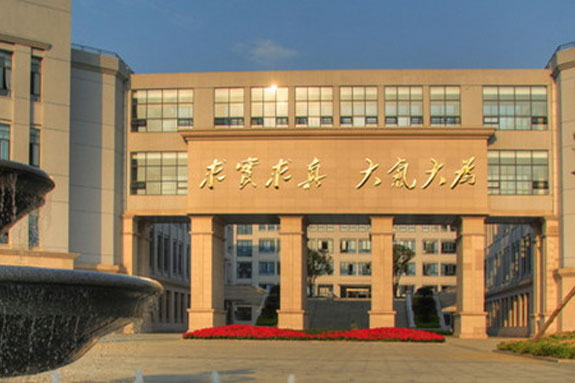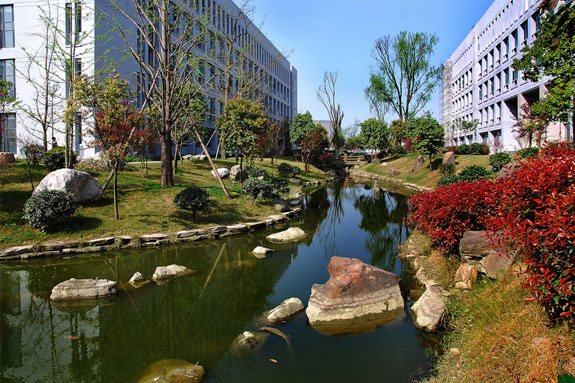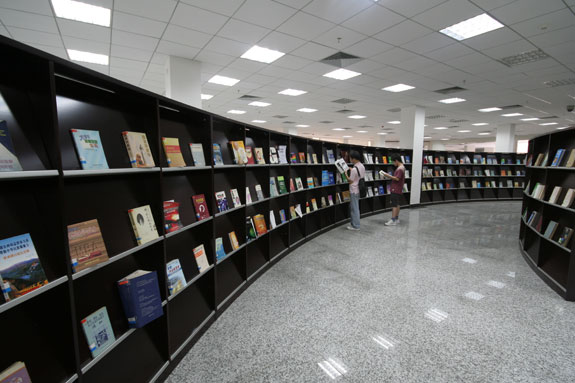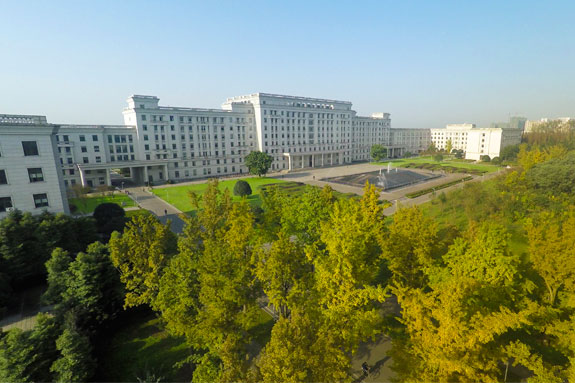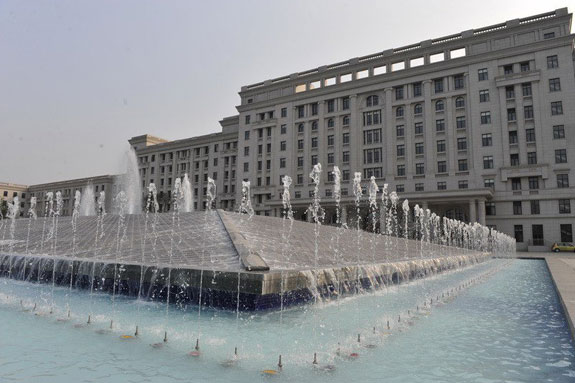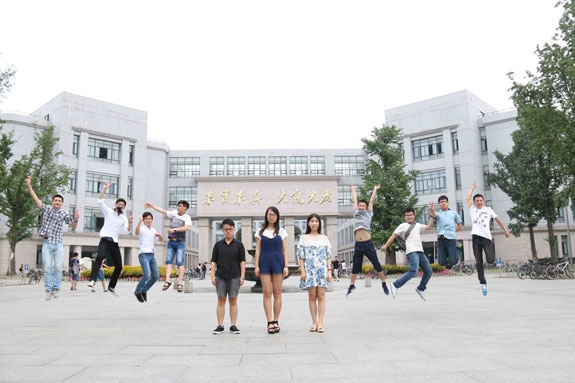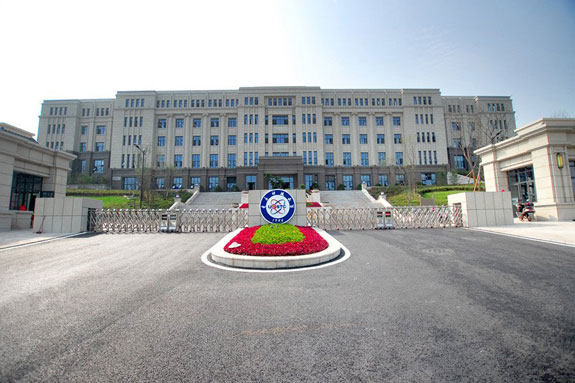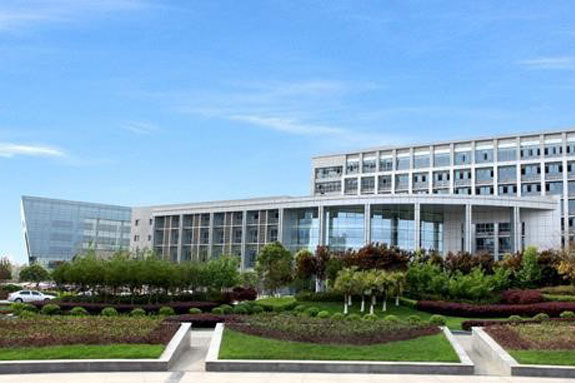Programmes Offered
Currently, the School of Information and Communication Engineering consists of 5 departments and a Key Laboratory of Ministry of Education of China.
Departments
- Communication Engineering (National Characteristic Specialty)
- Network Engineering (National Characteristic Specialty)
- Information Engineering
- Engineering for Internet of Things
- Electronic Engineering
The program, with information and communication engineering, electronic science and technology, computer science and technology as key subjects, fosters special talents with professional knowledge in electronic information engineering, electromagnetic field and microwave technology, signal and information processing, circuits and systems, who can work in research, design, manufacture, and operation in the field of information technology, or in the information technology research and equipment development in the departments of national economy and national defense industry.
Graduates will engage in scientific research, technology development and teaching in the field of electronics and information engineering or high-level management in related areas.
- The current interested research fields of the School include:
- Broadband Communication Network Technology,
- Internet Technology and Theory,
- Wireless and Mobile Information Network,
- Complex and Multidimensional Information Processing,
- Optical Communication Technology,
- Optical Fiber Technology and Application,
- Micro-nano Photonic Devices and Application,
- IC Communication and Embedded System Technology,
- RF Integrated Circuit and System,
- Signal and Information Processing Technology,
- Multimedia Communication and Processing Technology, etc.
In January of 2018, some relevant disciplines on Electronic Science and Technology have been reorganized into a new School of Electronic Science and Engineering (Pilot School of Microelectronics) by the former School of Electronic Engineering, school of Microelectronic and Solid-electronic and School of Physic Electronics.
The new-built school owns 5 undergraduate programs on Electronic Science and Technology, Microelectronics Science and Engineering, Electromagnetic Field and Microwave Technology, Electromagnetic Wave Propagation and Antenna, Integrated Circuit Design and Integration System, while 5 graduate programs(both master and phd)on Electromagnetic Field and Microwave Technology, Circuits and System, Physical Electronic, Microelectronics and Solid-electronics, Electronic information materials and components which all belong to the first-level discipline of Electronic Science and Technology.
The program, with information and communication engineering, electronic science and technology, computer science and technology as key subjects, fosters special talents with professional knowledge in electronic information engineering, electromagnetic field and microwave technology, signal and information processing, circuits and systems, who can work in research, design, manufacture, and operation in the field of information technology, or in the information technology research and equipment development in the departments of national economy and national defense industry. Graduates will engage in scientific research, technology development and teaching in the field of electronics and information engineering or high-level management in related areas.
- Electromagnetic Field and Microwave Technology
- Circuits and System
- Microelectronics & Solid-State Electronics:
- Electronic Information Materials & Components:
- Physical Electronics
History & Timeline
1964 Established as Department of Mechatronics Engineering
2001 Renamed as School of Mechatronics Engineering
2003 Started Ph.D. Program in Mechanical Engineering
2007 provincial Engineering Training Center was authorized
2016 National Mechatronics and Control Engineering Experimental Center was approved
2018 Renamed as School of Mechanical and Electrical Engineering
There is strong industrial demand for skilled engineers able to span the mechanical and electrical engineering disciplines. This degree will give you the fundamental knowledge and tools to satisfy this demand in a unique way. During this course, you will study units from the mechanical and electrical disciplines along the following themes: design and integration of electro-mechanical systems; energy conversion and actuation systems; embedded systems and control; power electronics and electric drives; and thermal energy management.
- Mechanical Engineering
- Advanced Equipment and Control
- Reliability Engineering
- Instrument Science and Technology
- Electrical Engineering
The School of Optoelectronic Science Engineering has originated from an earlier program of Electrical Vacuum Devices, which was established at UESTC with an aid from the former Soviet Union dated back to the year of 1956. It was among several of the earliest programs initiated in China to research on laser and optoelectronic technologies. The Department of Optoelectronic Technologies was built in 1979. In 1998, according to the new major classification of the Academic Degrees Committee of the State Council and the China State Education Commission, the prior National Key Discipline of China, i.e. “Physical Electronics and Optoelectronics” was reconstructed as the program of Optical Engineering. In the same year, the program of Optical Engineering was qualified to grant the primary discipline master’s and doctoral degrees. The School of Optoelectronic Science Engineering was then constructed in 2001. Its program of Optical Engineering was selected as the Key Disciplines of Sichuan Province in 2004, and to the Cultivation Program of National Key Disciplines of China in 2007.The program of Optical Engineering has been ranked No. 7 in the recent discipline evaluation by China Ministry of Education in 2012.In December 2017, establishing school of ophotoelectric science and engineering according to the national “double top” construction requirements. On January 18, 2018, school held its founding congress.
Optoelectronic Information Science and Engineering is an electronic information profession combining optical engineering with electronic, information and mechanical engineering. This major is to cultivate talents who understand light and electricity while being able to operate at the same time, the professional graduate students have photoelectric solid foundation, strong mechanical design, electronic technology, computer application, optical fiber communication and information processing ability. And they are good at basic theory and applied technology in the field of information science and technology. The graduates of this major can be engaged in the design, development, testing, management and other aspects of the field of optical information science and technology.
School of Automation Engineering offers two post-doctoral stations—Instrument Science and Technology, Control Science and Engineering; two primary discipline doctoral and master programs- Control Science and Engineering, Instrument Science and Technology; two undergraduate programs—Automation Testing Control Technology and Instruments. Research includes broadband time-domain testing technology and instruments, electronic system testing and diagnosis, microwave and millimeter wave testing technology and remote sensing, modern signal processing and detection technology, new energy system and control technology, pattern recognition and robotics.
At present, there are 150 faculty, including 1 professor selected in New Century Talents Project, 7 teachers selected in the New Century Excellent Researcher Award Program from Ministry of Education of China, 1 Sichuan Province Outstanding Teacher in teaching, 1 Sichuan Province Famous Teacher, 3 Sichuan Province Academic and Technology Leading Teachers and 27 Professors. In recent 5 years, the annual research funding of SEA is over RMB 50 million yuan. SAE has won 10 sci-tech awards in Sichuan Province, including 1 second prize of national technological innovation, 2 first grade of scientific and technological advance of ministry of education, 1 first grade of scientific and technological advance of Sichuan Province. Over 500 SCI/EI papers have been published and over 60 national invention patents have been obtained.
An automation engineering course trains students to troubleshoot, repair and maintain automated industrial equipment, such as computer numerical control equipment and robots. Automation engineering courses include instruction in fluid dynamics, thermodynamics and electrical circuits. Through instructive courses and hands-on lab sessions, students learn how to use programmable logic controllers and other robotics control devices in an industrial or manufacturing environment.
Instrument Science and Technology
- Wideband Time-domain Testing Technology and Instruments
- Comprehensive Test, Diagnosis and Prediction of Electronic System
- Microwave Millimeter Wave Testing Technology Remote Sensing
- Integrated Circuit Test and Testability Design Theory and Technology
- New Sensing Technology and Precision Measurement
Control Science and Engineering
- Complex systems and intelligent information processing
- New energy system and control technology
- Pattern recognition and intelligent system
- TT & C communication and navigation control
- Detection technology and automation device
History & Timeline
1956— Major of computer was established.
1979—Department of computer was established.
1984—Institute of Microcomputer was established.
1995—School of Computer Science & Engineering was established.
The study of computer science and engineering are now essential to success in the current information society. Researchers in this field study the design and production of high-performance computers, write operating system and application software, and apply these tools across the entire industry. You will be able to learn the technical fundamentals and give you the time to apply your knowledge in real situations.
- Computational Theory
- Artificial Intelligence and Pattern Recognition
- Computer Graphics and Multimedia
- Computer System Structure and High Performance Computing
- Computer Networks
- Cyberspace Security
- Data Science and Data Mining
- Cloud Computing and Cloud Platform
- Embedded System
History & Timeline
2001 —School of Software was established
2011 —School of Information and Software Engineering (SISE) was established on the basis of previous Demonstrative School of Software.
Bachelor’s programs in computer software engineering draw heavily from the computer sciences but may also have a managerial or business component. Students of these programs could learn how to build and maintain computer software that meets a high standard and that can be delivered within a defined period of time. The development of problem-solving abilities is a key component of the bachelor’s degree program. Students will have to address software problems by applying concepts learned in their computer programming courses. Some programs may require completion of a research project.
This programme will direct students to the development and use of multimedia systems. Students are exposed and trained in the relevant programming skills with use of multimedia applications. Theoretical & Technical will help you to understand the role of communication technology and tools as applied to disseminated multimedia. Programming Skills will develop skills and in-depth understanding of the use of multimedia tools (applications) with programming languages for Internet and World Wide Web applications as well as learning the importance of interactive design in computer programming.
History & Timeline
1984—Research Group consisting of Biomedical Engineering, Biophysics and Biochemistry& Molecular Biology is established.
2001—School of Life Science and Technology is established.
In the School of Life Science and Technology, students learn a wide range of specialized knowledge related to life science and technology and engage in world-class research and development. We aim to cultivate individuals with expertise in life science and engineering who can create new science and technology. In the Undergraduate Program, students learn the basics of science and technology in specialized courses covering life science-related biology, chemistry, and physics. In Life Science and Technology, students mainly take advanced courses in life science and conduct research. In Human Centered Science and Biomedical Engineering, students learn and conduct research by blending life science with the fields of chemistry, materials, machines, electrical and electronic engineering, information, etc.
Main Research Fields & Direction:
- Neural Information Science and Technology
- Biomedical Information Technology
- Biophysics and Biophysical Technology
History & Timeline
1982-the former Department of Management Engineering is established
1983-The School of Management and Economics of UESTC develops from its predecessor and is formally established, which is composed of four departments and several institutes.
Throughout the course you will study core business and economics modules and take additional modules related to management. With an emphasis on theoretical and applied microeconomics, you will gain the ability to analyse the economic and social environment in which economic decisions faced by managers and businesses are taken. You will develop an awareness of the business and financial environments and current business issues, as well as an understanding of modern economics ideas and their relevance to business and financial decision-making.
Main Research Fields and Directions:
- Regional Economics and Sustainable Development Strategy
- Regional Eco-economics
- Capital Markets and Corporate Finance
- Macro-finance
- Financial Intermediation
- Financial Engineering
- Price Theory and Application
- Econometric Analysis
Fees & Structure
Route 1:

| UESTC | Tuition fees (To be paid to UESTC) | |||
| Year 1 | Year 2 | Year 3 | Year 4 | |
| Bachelor Degrees
· IT & Computing |
15000 ¥- Chinese Instructed
20000 ¥- English Instructed |
15000 ¥- Chinese Instructed
20000 ¥- English Instructed |
15000 ¥- Chinese Instructed
20000 ¥- English Instructed |
15000 ¥- Chinese Instructed
20000 ¥- English Instructed |
| Phoenix Asia | Tuition fees (To be paid to Phoenix Asia) | |||||||
| Year 1
Diploma |
Year 2
Diploma |
Year 3
Degree |
Year 4
Degree |
|||||
 |
 |
 |
||||||
| Diplomas
· IT & Computing · Hotel & Hospitality · Business Management · Teacher Training · Accounting & Finance · Sales & Marketing · Leadership & Team Working |
RM7500 | RM7500 | RM8250 | RM8250 | ||||
| Term 1 | Term 2 | Term 1 | Term 2 | Term 1 | Term 2 | Term 1 | Term 2 | |
| Tuition fees:
RM2500 External fees: RM1250 |
Tuition fees:
RM2500 External fees: RM1250 |
Tuition fees:
RM2500 External fees: RM1250 |
Tuition fees:
RM2500 External fees: RM1250 |
Tuition fees:
RM1625 External fees: RM2500 |
Tuition fees:
RM1625 External fees: RM2500 |
Tuition fees:
RM1625 External fees: RM2500 |
Tuition fees:
RM1625 External fees: RM2500 |
|
| Bachelor Degrees
· IT & Computing · Business Management |
||||||||
